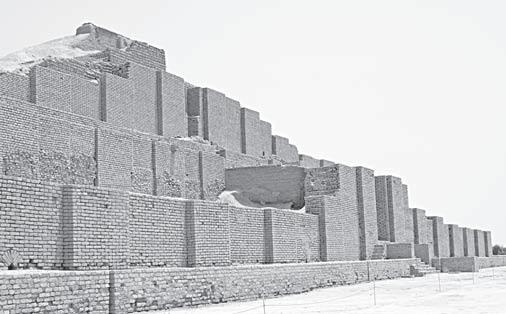
5 minute read
The legendary ziggurats of Iran
By Bernard Joseph Esposo Guerrero
IRAN i s easily one of the most underrated countries around the world. For some reasons, many find it unsettling and unsecure. Not only are the locals some of the friendliest and most courteous people I have encountered during my travels, but the rather mysterious and introverted country is also a cultural destination of the highest order. I could only wish that others can discover the joys that it can offer, too.
If Egypt takes pride in its enormous pyramids, there are other similar ancient structures built almost at the same time—if not earlier—in regions formerly called Mesopotamia and Persia. Ziggurats are stepped pyramidal religious monuments made of mud and bricks. The most famous ziggurat might be the one at u r i n present-day Iraq, but the most wellpreserved, the oldest, and the most historical ones are all in Iran.
When I traveled across Iran in 2017 for a month, I managed to see four of the five fabled ziggurats, missing only the one at Jiroft.
Tepe Sialk. Standing in the suburbs of the city of Kashan in Isfahan province, which lies along the former busy silk trade route, is the oldest known ziggurat in the world. The area where Tepe Sialk is located has been occupied since 6,000 B.C., and it contains the remains of two monumental temple towers that were built around 3,000 B.C. The ziggurats look nothing more than mounds of earth nowadays, and even in their heydays, the architecture may have rather been very rudimentary. However, they are rich sources of artifacts from the Sayandeh River Culture, a civilization believed to have thrived 8,000 years ago. There is a necropolis beside one of the mounds where some skeletal remains have been exposed for visitors to see. The historic settlement in the desert was and made possible due to the presence of the Solomon Spring that still also feeds fresh water to the nearby Fin g a rden, the oldest fully functioning Persian garden.
Ziggurat of Susa. The cultural landscape of Sush, as it the town is now called, covers a history spanning from 5,000 B.C. up to when the Macedonian Alexander the g r eat sacked and burned the great city of Susa down. At the hands of the Achaemenid kings, most especially Darius the g r eat, Susa became legendary for its unparalleled beauty and might. The once marvelous city marked the point of convergence of two great cultures: the Mesopotamian and the Iranian Plateau civilizations.
The nearly 7-meter-thick rammed earth ziggurat of Susa was used as the foundation of the Apadana Palace of the Persians. Though only the walls remain from the original stepped temple, objects recovered provide significant resources in understanding better the early stages of the Elamites, not only culturally but also in the realm of urban planning.
Susa is mentioned in the Bible, and it houses what is generally accepted as the Tomb of prophet Daniel. It is inscribed as a u N ESCO World Heritage Site.
Great Ziggurat of Chogha Zanbil.
Considered as one of the largest and best-preserved ziggurats in the world, the mammoth one at Chogha Zanbil measures nearly 106 meters on each side, and it rises to a maximum height of 53 meters—quite high for the time. Today, the structure only stands 25 meters tall. Still, its state of preservation is second to none.
Chogha Zanbil was once a holy Elamite City founded in 1250 B.C. Similar to the fate of Susa, it was destroyed by Neo Assyrian King Ashurbanipal even before it was completed.
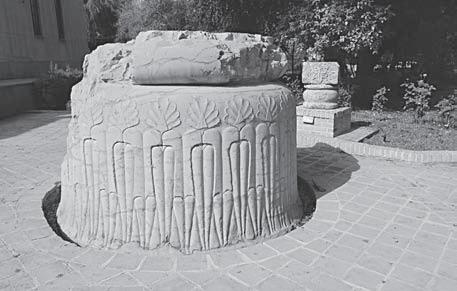
It was enclosed with three concentric walls, displaying a well-planned city with a royal quarter, one for commoners, and the g r eat Ziggurat right at the center. An interesting aspect of the ziggurat are the baked bricks containing cuneiform characters found all over the structure. They deliver a curse wherein anyone who would dismantle the building would suffer the wrath of the gods.
Chogha Zanbil became Iran’s first early 20th century build and style their mansions, drawing inspirations from the Spanish-inspired balconies to the quirky color amalgamations of the “sawn and carved” look of Victorian-style, to the classic components of a Filipino colonial house.
Fort Santiago
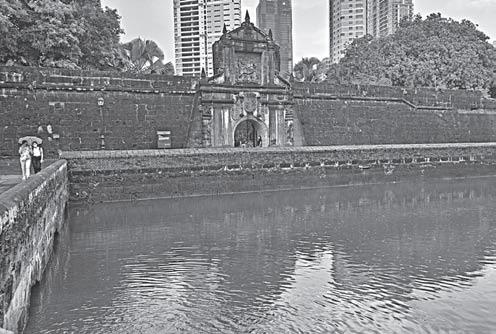
F OR T S antiago, perched on the banks of the Pasig River, is a mute testament to Manila’s turbulent past. The crumbling fortresses of Spanish imperial power now reverberate with the voices of the past.
A former citadel constructed in 1571 by Miguel Lopez de Legazpi, Fort Santiago witnessed some of Manila’s bloodiest episodes during the Spanish colonial era and up until World War II. Our national hero Jose Rizal was imprisoned here shortly before his execution in 1896. From the Rizal Shrine housed inside the fort walls that showcase many of his personal belongings, one can also follow the bronze footprints engraved on the ground tracing his final trek to the then Bagumbayan.
Baluarte de San Diego
O R I g I NALLy constructed between 1591-1594 to serve as a projection platform for artillery defense against invaders coming from Manila Bay, this mediaeval structure is highlighted by its thick three-tier circular walls made of large blocks of stones and a curtain of walls. The San Diego complex, which actually houses another structure: the ruins of Torre de Nuestra Señora de g u ia (Our Lady of g u idance), was designed by Antonio Sedeño, a Jesuit priest and architect.
After a large part of the bastion was excavated from 1979 to 1982, a circular outer structure revealed its whole form. Today, the bastion is surrounded by manicured lawns leading to San Diego g a rden and dotted with gazebos and pergolas. The guard told us that sometimes, a wedding recep - tion is even held there.
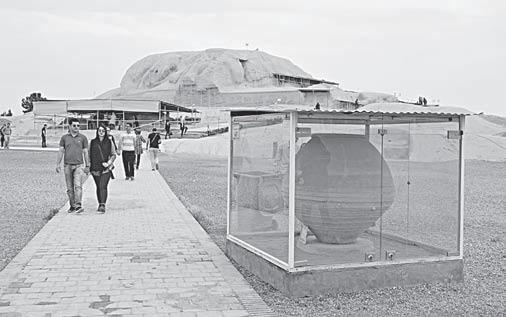
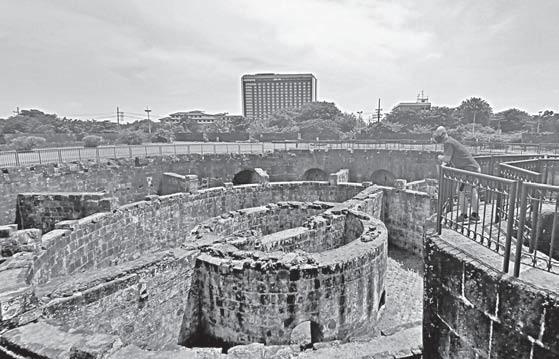
San Agustin Church u N ESCO World Heritage site in 1979.
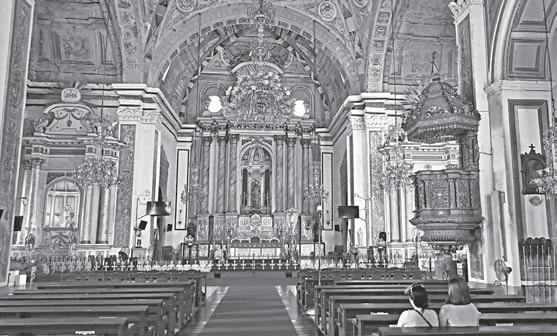
O NE o f the Baroque Churches of the Philippines designated as a World Heritage site by u N ESCO, the San Agustin Church is another important landmark inside Intramuros. Also known as the Church of Saint Augustine, it is the oldest stone church in the country, being built in 1607. Patterned after the magnificent temples built by the Augustinians in Mexico, the Church gives a medieval vibe adorned by giant chandeliers, a baroque pulpit, a grand altar, a crucifix from the 16th century and a plethora of elaborate artworks and sculptures. Also, don’t miss the San Agustin Museum which is housed in the former Augustinian monastery next to San Agustin Church. Inside, one can find a collection of religious artwork and relics on display, all illuminating the long and storied history of Catholicism in the Philippines.

Haft Tepe. Close to the Iraqi border, Haft Tepe, another eroded ziggurat, corresponds to the remains of Kabnak, an Elamite city established by King Tepti-Ahar around 1,500 B.C when he moved his short-lived capital from Susa. Aside from the ziggurat, which was once adorned with bronze decorations and paintings, the site houses one of the most exciting archaeological discoveries made in Iran, the underground funer - ary chambers with the “Royal Tomb” being the most important.
Haft Tepe is conveniently located in between Susa and Chogha Zanbil. so,making a quick stopover is out of the question. I was fortunate enough to have surveyed the complex and even climb up the highest mound (the supposed top of the ziggurat) on my own and at my own pace. The experience enabled me to imagine and absorb how the city may have looked like before.
It is not every day that one can climb such structures. There is also an ad - jacent museum which displays invaluable antiquarian finds from the area. If those things do not excite much, the cool airconditioned hall provides a rewarding respite from the heat outside.
Haft Tepe, Susa, and Chogha Zanbil are lies within ancient Susiana, a region contiguous to or may even be a part of Mesopotamia. Ziggurats have timeless appeals, so much so that their legacies extended to the Art Deco period, becoming one of the most sought-after motifs of the 1920s and beyond.





